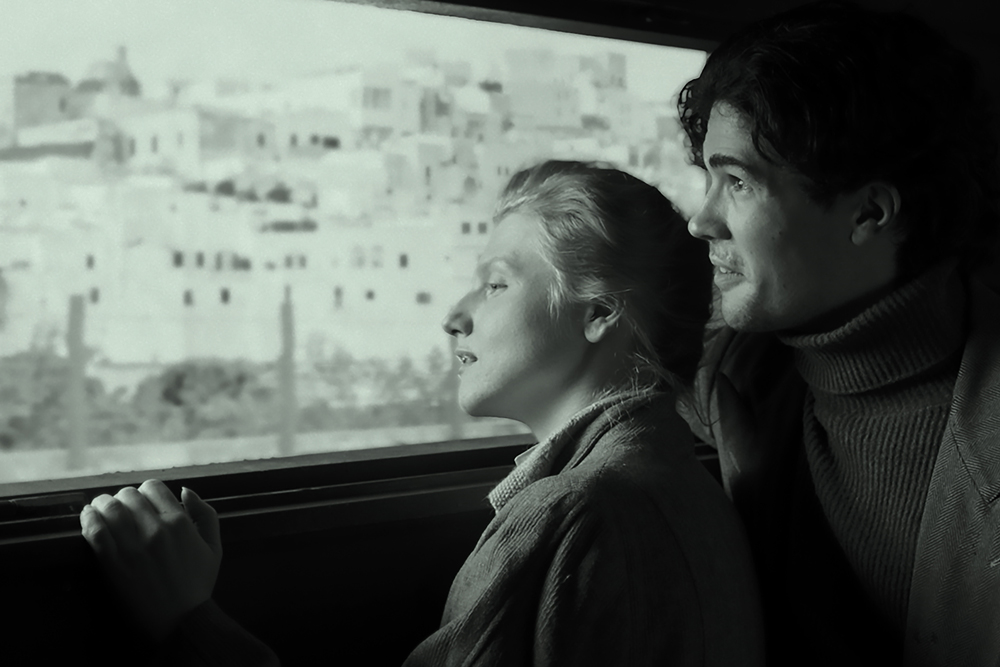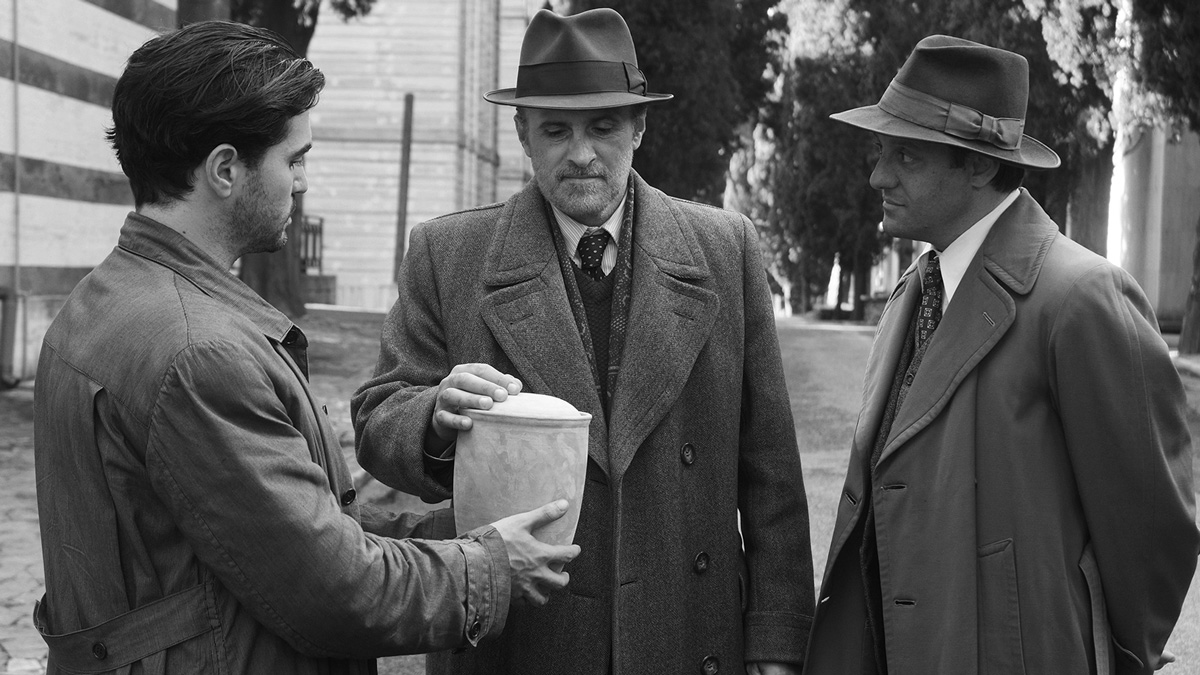2023.06.30
A running light called a train
``Leonora addio'' is a work that takes Paolo Taviani back to the time of his masterpiece ` `Chaotic Tales of Sicily '' (1984), which was also based on Pirandello's work. Pirandello, who dies physically in the opening scene, continues to have visions of his children growing older and graying. Pirandello's pure white room, photographed in monochrome, looks like the stage for a play.
The Taviani brothers have transformed many spaces into theatrical "stages," from squares and alleys to meadows and beaches, and even prisons. For the Taviani brothers, spaces where many people gather are both surreal theater spaces and spaces where popular uprisings are depicted. Is it fair to say that the vitality of the people of the city is concentrated in the space of the plaza? In this work, traveling by train serves as the main stage of Taviani's ``theatrical space''.
After gaining his freedom at the end of the war, Pirandello's ashes are brought to his hometown by a special envoy from Sicily. What is interesting is that there was no way for the ashes to be transported by air. Plans to transport the ashes on a US Air Force plane were canceled after passengers became fearful of flying with the ashes. The envoy is forced to travel by train.

“Leonora addio” © Umberto Montiroli
A train, a vehicle that takes you back to the origins of movies. A piano player is on board the train in which the ashes travel. It's like a silent movie with live music being shown. As the train progresses, excerpts from Italian neorealist films such as Roberto Rossellini's `` Beyond the War '' (1946) are inserted. For the Taviani brothers, who call themselves ``children of neorealism,'' this group of works served as the starting point for everything else.
The events that occur on the train unfold like lanterns as a microcosm of postwar memories. The episode about the lovers traveling with a German woman who cannot speak Italian is particularly beautiful. For Paolo Taviani, postwar Italian films convey The Truth about citizens more than news footage. In many ways, this film is a return to my motivation for making movies. Paolo's older brother Vittorio once said of `` Beyond the War '' as follows:
“The huge trauma we had experienced was reflected on the screen.”*
* Cinéaste [We Believe in the Power of Cinema:AN INTERVIEW WITH PAOLO & VITTORIO TAVIANI]


